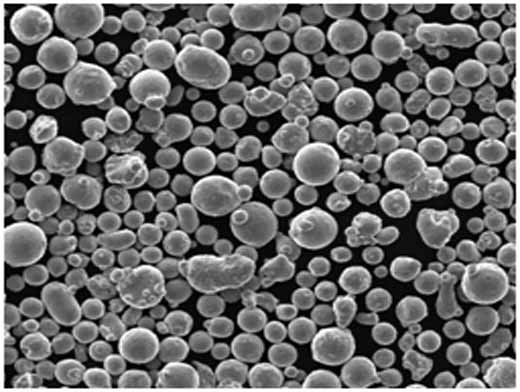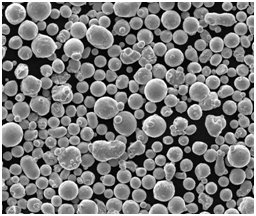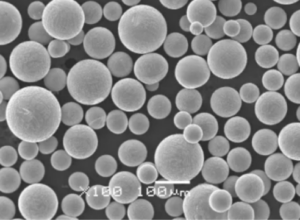When it comes to advanced metallurgy, FeCoNiCrV Powder stands out as a fascinating subject. This alloy powder is a mix of five metals—Iron (Fe), Cobalt (Co), Nickel (Ni), Chromium (Cr), and Vanadium (V)—that together offer unique properties and diverse applications. Whether you’re a materials scientist, an industrial engineer, or just someone curious about the science behind advanced alloys, this guide will break down everything you need to know about FeCoNiCrV Powder. So, grab a cup of coffee and let’s dive in!
What is FeCoNiCrV Powder?
FeCoNiCrV Powder is a high-entropy alloy (HEA), known for its exceptional mechanical properties, thermal stability, and corrosion resistance. It’s made by combining nearly equal proportions of its five constituent metals. The powder form makes it particularly versatile for industrial applications like 3D printing, coating technologies, and additive manufacturing.
Key Features of FeCoNiCrV Powder
- High strength and durability: Ideal for demanding environments.
- Thermal stability: Performs exceptionally well under extreme temperatures.
- Corrosion and oxidation resistance: Extends product lifespan in harsh conditions.
- Customizable compositions: Different proportions of elements can tweak its properties.

Composition of FeCoNiCrV Powder
The composition of FeCoNiCrV Powder is typically balanced to optimize specific characteristics. Here’s a breakdown of its constituents:
| Metal | Proportion (%) | Role in Alloy |
|---|---|---|
| Iron (Fe) | 20–25 | Base metal, provides strength. |
| Cobalt (Co) | 20–25 | Enhances magnetic properties. |
| Nickel (Ni) | 20–25 | Adds toughness and ductility. |
| Chromium (Cr) | 20–25 | Offers corrosion resistance. |
| Vanadium (V) | 5–10 | Boosts hardness and wear resistance. |
By adjusting these ratios, manufacturers can tailor the powder to meet specific needs.
Characteristics of FeCoNiCrV Powder
Why is FeCoNiCrV Powder such a sought-after material? Its characteristics are the answer.
| Property | Description |
|---|---|
| Hardness | High hardness levels, ideal for wear-resistant applications. |
| Density | Medium density (~7.8 g/cm³), ensuring structural integrity. |
| Thermal Conductivity | Moderate, allowing for heat dissipation. |
| Oxidation Resistance | Excellent, even at elevated temperatures. |
| Magnetic Properties | Strongly magnetic due to cobalt and nickel content. |
| Machinability | Moderate; works well in powder metallurgy processes. |
Top Models of FeCoNiCrV Powder
Here are some specific models of FeCoNiCrV Powder that cater to various applications. Each has its own unique set of properties and uses.
1. FeCoNiCrV-HR10
- Description: High-strength variant for structural components.
- Key Features: Exceptional tensile strength, corrosion resistance.
- Applications: Aerospace and automotive industries.
2. FeCoNiCrV-HT15
- Description: Optimized for high-temperature environments.
- Key Features: Outstanding oxidation resistance, thermal stability.
- Applications: Turbine blades, heat exchangers.
3. FeCoNiCrV-AM20
- Description: Specifically designed for additive manufacturing.
- Key Features: Fine particle size, excellent flowability.
- Applications: 3D printing, complex geometries.
4. FeCoNiCrV-WR30
- Description: Wear-resistant powder for demanding conditions.
- Key Features: High hardness, reduced friction.
- Applications: Tooling and die manufacturing.
5. FeCoNiCrV-CF40
- Description: Corrosion-resistant powder for marine applications.
- Key Features: High chromium content, excellent saltwater resistance.
- Applications: Marine hardware, shipbuilding.
6. FeCoNiCrV-MS50
- Description: Magnetic-sensitive powder for electrical components.
- Key Features: Superior magnetic properties.
- Applications: Motors, generators, magnetic shielding.
7. FeCoNiCrV-LT60
- Description: Low-temperature-resistant powder.
- Key Features: Retains toughness in sub-zero environments.
- Applications: Cryogenic storage tanks, polar equipment.
8. FeCoNiCrV-DP70
- Description: Dual-phase alloy powder for balanced properties.
- Key Features: Combines ductility with strength.
- Applications: Industrial machinery.
9. FeCoNiCrV-SP80
- Description: Superplastic powder for forming processes.
- Key Features: High ductility, ease of shaping.
- Applications: Aerospace fuselage components.
10. FeCoNiCrV-EX90
- Description: Experimental-grade powder for research.
- Key Features: Fully customizable composition.
- Applications: R&D in advanced materials.






Applications of FeCoNiCrV Powder
FeCoNiCrV Powder finds uses in a wide variety of industries due to its adaptability. Here’s a quick look at where it shines:
| Application Area | Example Products |
|---|---|
| Aerospace | Turbine blades, structural parts. |
| Automotive | High-performance gears, exhaust components. |
| Marine | Corrosion-resistant propellers, hull fittings. |
| Medical | Surgical instruments, orthopedic implants. |
| Energy | Heat exchangers, turbine coatings. |
| Additive Manufacturing | Complex geometries in 3D-printed parts. |
| Tooling and Machinery | Wear-resistant dies, cutting tools. |
Specifications and Standards
Here’s how FeCoNiCrV Powder is graded and sized for different industries:
| Specification | Details |
|---|---|
| Particle Size Range | 15–150 microns. |
| Purity Levels | 99.5% minimum for high-grade powders. |
| Density | ~7.8 g/cm³. |
| Standards | ASTM B212, ISO 5755. |
| Grades Available | Industrial, medical, aerospace, experimental. |
Suppliers and Pricing
To give you a ballpark idea of the costs and sources:
| Supplier | Region | Price Range (per kg) |
|---|---|---|
| MetalTech Ltd. | USA | $150–200. |
| AlloyWorks International | Europe | $180–250. |
| PowderPro Industries | Asia | $130–180. |
| Hi-Entropy Metals | Global | $200–300 (custom compositions). |

Advantages and Limitations of FeCoNiCrV Powder
No material is perfect. Here’s how FeCoNiCrV Powder stacks up:
| Advantages | Limitations |
|---|---|
| High strength and durability. | Costlier than standard alloy powders. |
| Excellent corrosion resistance. | Requires specialized processing equipment. |
| Versatile across applications. | Limited availability of some compositions. |
| Customizable properties. | Complex recycling and reprocessing. |
FAQs
| Question | Answer |
|---|---|
| What is FeCoNiCrV Powder? | A high-entropy alloy made of Iron, Cobalt, Nickel, Chromium, and Vanadium. |
| What is it used for? | Aerospace, marine, medical, automotive, and additive manufacturing. |
| How is it manufactured? | Powder metallurgy or atomization processes. |
| Why is it expensive? | Advanced properties and high production costs. |
| Can it be recycled? | Yes, but it requires specialized facilities. |

